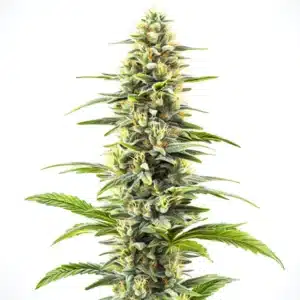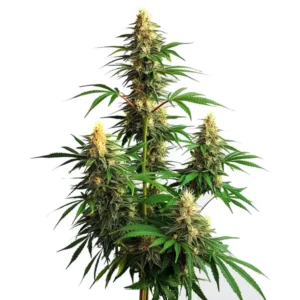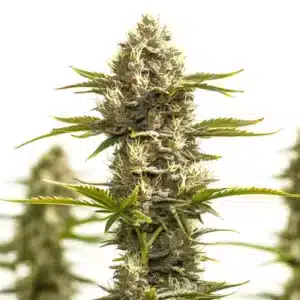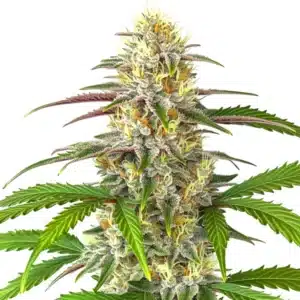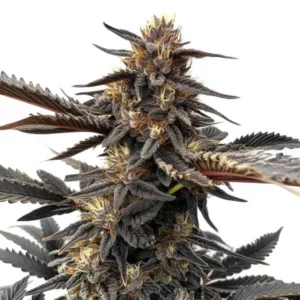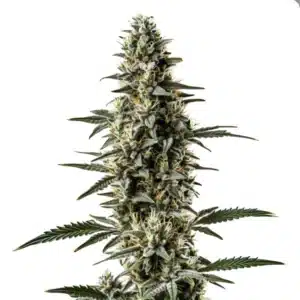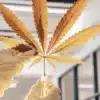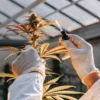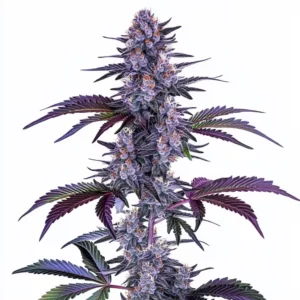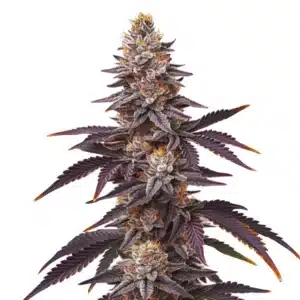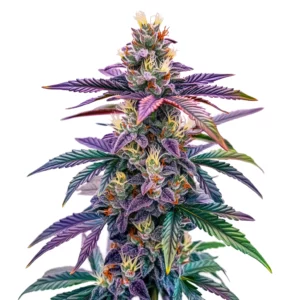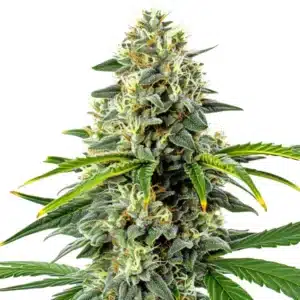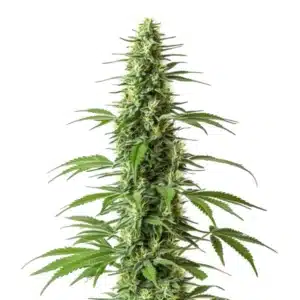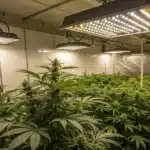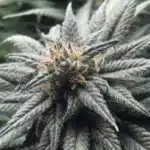
How to Grow Strain Blue Haze
Strain Blue Haze Description
Blue Haze Strain stands out as a popular blue marijuana strain with its refreshing, fruity aroma and subtle herbal-citrus hints. It carries a medium THC level of 20% to 23% and very low CBD. This feminized strain comes from a cross between Amnesia Haze and Blueberry and is mostly Indica in nature (80% Indica / 20% Sativa), offering a strong and relaxing experience.
The buds are moderately dense and resinous, displaying vibrant green tones with a slight bluish shimmer. Its terpene profile features Beta-Caryophyllene, Limonene, Linalool, Myrcene, Para-Cymene, and Terpinolene, creating flavors of berry, cheese, earthy, herbal, and pungent notes. Blue Haze delivers energetic, euphoric, and focused effects that make it ideal for daytime use, stimulating creativity while providing gentle body relaxation. Understanding the blue haze strain effects helps users appreciate its ability to alleviate issues such as depression, insomnia, and muscle spasms.
Recommended Strains
Blue Haze
|
|
THC | 20% - 23% (Medium) |
|
|
Type | Feminized |
|
|
Yield | High |
|
|
Phenotype | 30% Indica / 70% Sativa |
Amnesia Haze Auto
|
|
THC | 16% - 17% (Medium) |
|
|
Type | Autoflowering |
|
|
Yield | Low |
|
|
Phenotype | 25% Indica / 75% Sativa |
Promos & Deals
Growing Environment
Strain Blue Haze thrives in a stable, controlled environment. Indoor growers should keep daytime temperatures between 70°F and 80°F (21°C-27°C) with slightly cooler nights to support proper bud formation. During the vegetative stage, maintain humidity between 60% and 70% and reduce it to 40%-50% during flowering to prevent mold and enhance resin production. Use quality LED or HPS lights by providing 18-20 hours of light during early growth and switching to a 12/12 light/dark cycle once flowering begins.
For outdoor cultivation, choose a sunny location with well-draining, nutrient-rich soil. Enrich the soil with compost or worm castings to boost fertility and protect the plants from strong winds with simple barriers. Regular monitoring and active adjustments to temperature, humidity, and light are essential for healthy growth and a rewarding yield.
Strain Blue Haze Setting Up Your Grow Space
Indoor Cultivation
Set up a dedicated indoor area such as a grow tent or small room. Cover the walls with reflective materials to distribute light evenly. Install oscillating fans and an exhaust system with a carbon filter to manage heat and odors. Start your Strain Blue Haze plants in small pots with high-quality soil, keeping the pH between 6.0 and 6.5. As the plants develop, transplant them into larger containers so that the roots have plenty of room to grow.
This controlled environment lets you closely monitor conditions and make active adjustments, ensuring robust plants and a strong start to flowering.
Outdoor Cultivation
For outdoor growing, choose a location with full sun exposure. Prepare your soil by mixing in organic matter such as compost or worm castings, and consider using raised beds or large containers for improved drainage. Erect simple windbreaks to shield the plants from gusty winds. Regular watering and weed removal help maintain a clean, fertile environment that encourages vigorous growth.
Active care outdoors, including frequent monitoring and adjustments, ensures that your blue haze weed thrives naturally and produces a bountiful yield.
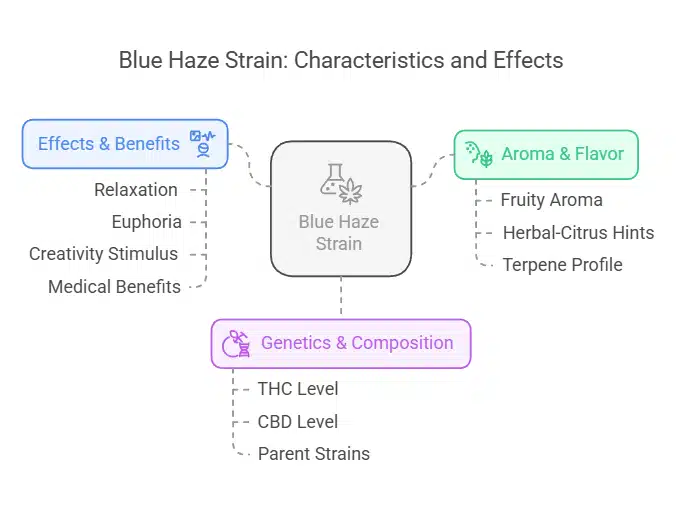
Seed Propagation and Germination
Begin with premium feminized seeds of Strain Blue Haze from a trusted supplier. Soak the seeds in distilled water or place them on a damp paper towel for 24-48 hours to soften the seed coat and trigger the taproot. Once a small taproot appears, plant the seed in a container with light, well-draining soil.
Maintain a temperature between 75°F and 80°F (24°C-27°C) and humidity around 60%-70% until the seedlings develop their first true leaves. Gradually increase light intensity as the plants grow. These careful steps establish a strong foundation for vigorous development throughout the growth cycle.
Strain Blue Haze Vegetative Phase
During the vegetative phase, Strain Blue Haze grows rapidly and builds a sturdy structure. Provide 18-20 hours of light per day to promote robust leaf and stem development, and use a nitrogen-rich fertilizer to support healthy growth. Employ active training techniques like low-stress training (LST) or topping to create an even canopy, ensuring that light reaches every part of the plant.
Close monitoring of temperature, humidity, and watering is key. Consistent care during this phase prepares the plants for a smooth transition into flowering, setting the stage for dense, high-quality bud formation.
Strain Blue Haze Flowering Phase
When it’s time to flower, change the light cycle to 12 hours on and 12 hours off. During this stage, Strain Blue Haze channels its energy into forming thick, resinous buds with a signature blueberry-citrus flavor. Feed the plants with fertilizers high in phosphorus and potassium to enhance bud development.
Keep temperatures cooler (65°F-75°F) and humidity lower (40%-50%) to prevent mold and boost resin production. Provide support for heavy branches with stakes or trellises if needed, and inspect the buds regularly with a magnifier. When most trichomes turn milky with some amber, it’s time to harvest. This attentive approach during flowering secures a top-quality yield.
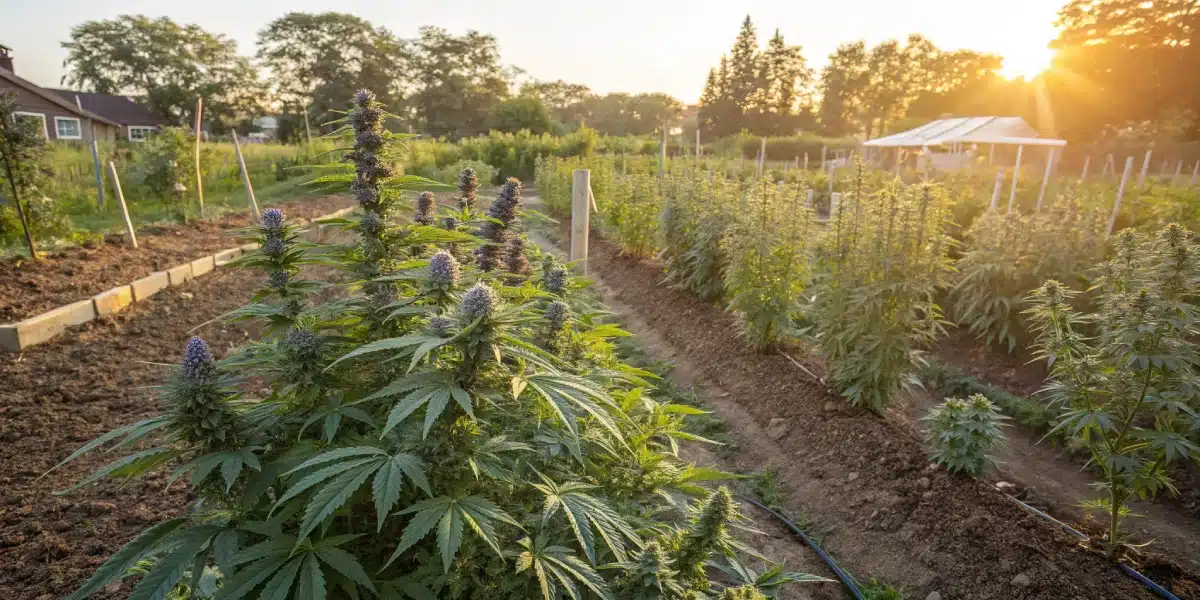
Fertilization and Nutrition
Proper feeding is vital for a successful Blue Haze crop. Start with a nitrogen-rich fertilizer during the vegetative phase to promote strong foliage, then switch to a blend rich in phosphorus and potassium during flowering to support bud growth. Keep the pH stable between 6.0 and 6.5 for optimal nutrient absorption. Many growers also add organic supplements like compost or worm castings to further enrich the soil, which enhances both yield and flavor.
Regularly review your watering schedule and adjust nutrient doses as needed. Active nutrient management is essential for keeping your Blue Haze plants healthy and productive throughout their life cycle.
Strain Blue Haze Pest and Disease Control
Keep your grow space clean and inspect your Strain Blue Haze plants daily for pests such as spider mites, aphids, or thrips. Use organic treatments like neem oil as soon as you notice any signs of infestation. Ensure good airflow and promptly remove dead leaves to reduce the risk of fungal diseases. If you notice any mold or mildew, remove the affected areas immediately and adjust humidity levels accordingly.
Quick and active responses to pest or disease issues are crucial to maintaining plant health and ensuring a successful harvest.
Harvesting and Curing
When most trichomes on Strain Blue Haze turn milky with some amber, it’s time to harvest. Use clean, sharp tools to carefully cut the branches. Dry the buds in a dark, well-ventilated area where temperatures stay between 60°F and 70°F, ensuring ample space for air circulation.
Once the buds are dry, cure them in airtight glass jars. Open the jars daily during the first week to release excess moisture, then allow the buds to cure for 2-4 weeks. This process refines the flavor and potency of Blue Haze while preserving its unique fruity and herbal aroma.
Strain Blue Haze Indica or Sativa?
Strain Blue Haze is a sativa-dominant hybrid that delivers an energetic, uplifting high. It boosts creativity and focus while providing gentle body relaxation, making it ideal for daytime use and creative projects.
Advantages and Disadvantages
Advantages: Blue Haze produces aromatic, resinous buds with a refreshing blueberry-citrus flavor. It adapts well to both indoor and outdoor growing and offers an energetic, clear-headed high. Its moderate THC levels and forgiving genetics make it accessible to many growers.
Disadvantages: The strain’s delicate flavor requires careful nutrient and environmental management. Yields can be moderate, and extra support may be needed during flowering to prevent branch breakage.
Why Buy Strain Blue Haze
Choose Strain Blue Haze if you want a unique, fruity strain with energizing effects. Its balanced profile makes it suitable for both recreational and medicinal use, addressing issues like depression, insomnia, and muscle spasms. Trusted suppliers ensure you receive quality genetics, offering a rewarding and consistent cultivation experience for both beginners and experienced growers.
Common Growing Problems
Watch for nutrient imbalances, improper watering, and pest infestations. Overfeeding, underwatering, or neglecting environmental controls can stress your plants. Regular monitoring and prompt corrective actions help prevent these issues, ensuring your Strain Blue Haze crop remains healthy and productive.
Similar Strains
Blue Dream: Blue Dream offers a fruity flavor and balanced high that appeals to similar tastes. It grows reliably with consistent yields, making it a popular alternative for those who enjoy blueberry-flavored strains.
Blueberry: Blueberry is renowned for its deep blueberry aroma and relaxing effects. Its genetic traits are similar to Blue Haze, providing a sweet and enjoyable experience for fans of fruity cannabis strains.
Tips for Professionals
Seasoned growers use timers, quality sensors, and organic supplements to fine-tune every aspect of cultivation. They keep detailed records of light cycles, nutrient adjustments, and environmental conditions to quickly address any issues. Blending modern technology with active, hands-on care ensures that Strain Blue Haze consistently produces premium yields.
FAQs About Strain Blue Haze
What makes Strain Blue Haze unique?
Strain Blue Haze stands out because of its refreshing, fruity aroma with hints of blueberry and citrus, combined with a balanced, uplifting high that boosts creativity and provides gentle relaxation. Its flavor profile and effects make it an excellent choice for daytime use.
How long is the flowering period?
The flowering phase for Blue Haze typically lasts between 8 and 10 weeks. During this time, the buds develop a dense, resinous structure and reach their peak potency as trichomes turn milky with some amber hues.
Can I grow Strain Blue Haze outdoors?
Yes, Blue Haze thrives outdoors when planted in a sunny location with well-draining, nutrient-rich soil. Consistent care, including proper watering, wind protection, and soil amendments, will help the plants flourish and produce a rewarding yield.
What nutrients does Blue Haze need?
Blue Haze benefits from a nitrogen-rich fertilizer during the vegetative stage to promote strong foliage. When flowering, switch to a blend high in phosphorus and potassium to boost bud development. Keeping the pH between 6.0 and 6.5 ensures optimal nutrient uptake.
What training methods work best?
Techniques like low-stress training (LST) and topping are effective for Blue Haze. They improve light penetration and airflow, resulting in an even canopy and higher yields by actively managing the plant’s growth.


